How to Pick the Right Lines
The Business End
The line at the end of your rig is vitally important. Apart from needing to be compatible with the hook size and its wire gauge, it has to match with the baits and methods being used. Breaking strain and diameter must be considered carefully, to get the full potential out of what you are aiming to do. Over-thick trace or rig mono can make hook baits behave unnaturally, which causes them to be ignored by bigger and wiser fish. Fragile line that’s very thin might gain more bites, but will require skilful handling, creating a lot of fish playing time if anything big comes along. Selecting the right line is a delicate balancing act, often required to catch beautiful fish like these, particularly from heavily pressured venues. A minute tweak in diameter, while maintaining a sensible breaking strain, can make all the difference between enjoying brilliant sessions or suffering dire ones.
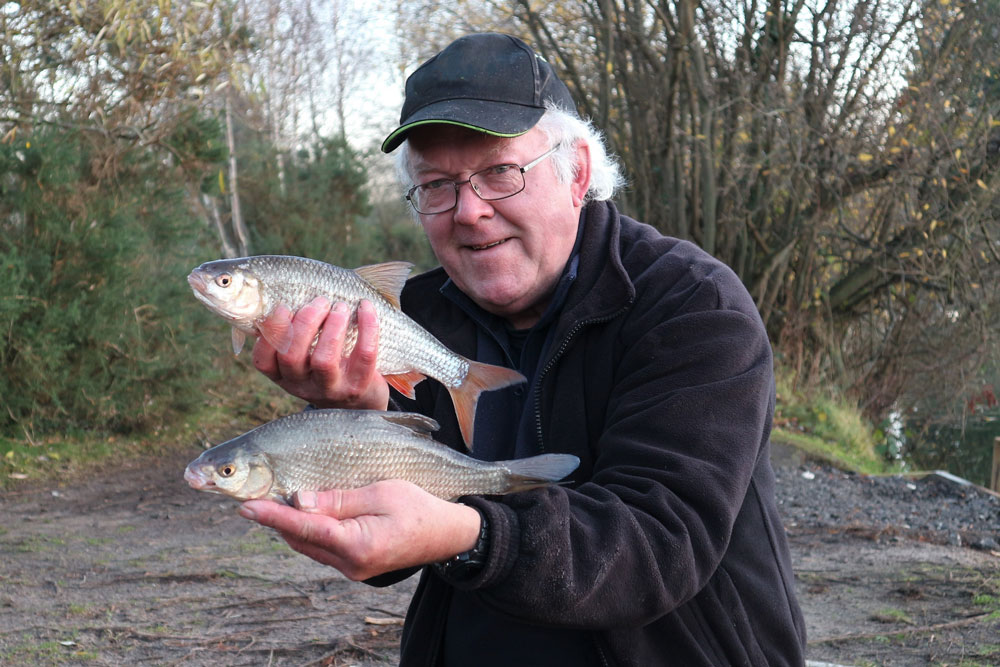
Not Being Fooled
Although steps have been taken to try to persuade line manufacturers to be honest about the diameters and breaking strains of their products, there are still those who cheat, in some cases quite considerably. I became really fed up with this and took the law into my own hands, respooled my rig lines, so I knew exactly what I was using. A monofilament that’s slightly too thick could be the reason for not getting any interest, making it crucial to know exactly what you have on your rigs. Some brands of hook length, or rig line as it’s often called, try to claim the impossible. But in reality, they are much thicker and stronger than the specifications printed on their spools. Being misled can result in poor results, which is why I rely on a digital micrometer. It lets me know exactly what I’m using and has made a big difference because being precise is better than second guessing.
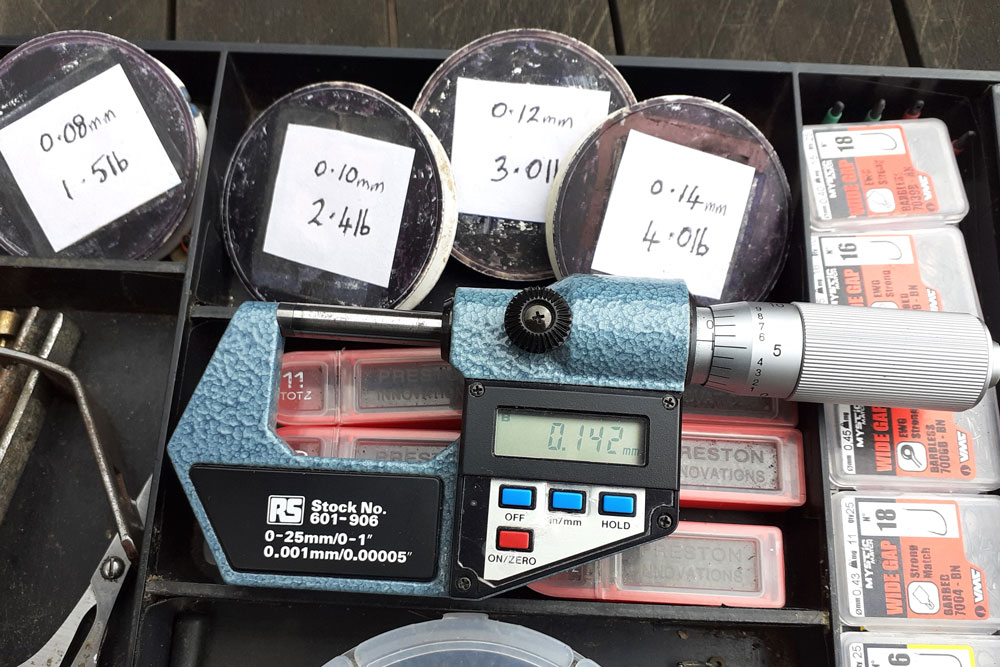
Premium Mono
After checking out Edge Premium Mono, I was pleasantly surprised to find its given diameters tallied with the readings on my micrometer, but without sacrificing on strength factor. Like any new product, I was cautious to begin with because this line is very thin and supple. I needn’t have worried, enjoying a hectic session. I fished on the light side with running line float gear, switching to banded pellets to get through small stuff. Apart from finding better quality fish like skimmers and rudd, the bait change invariably pulled in carp, which really tested my rig to its limits. Using refined end tackle is a good way of finding out how trusty rig lines really are. If they can take a good hammering without any signs of damage, such as coiling or over-stretching, stronger gauges are likely to be just as good. This crystal-clear line is super smooth, hangs straight and knots well.
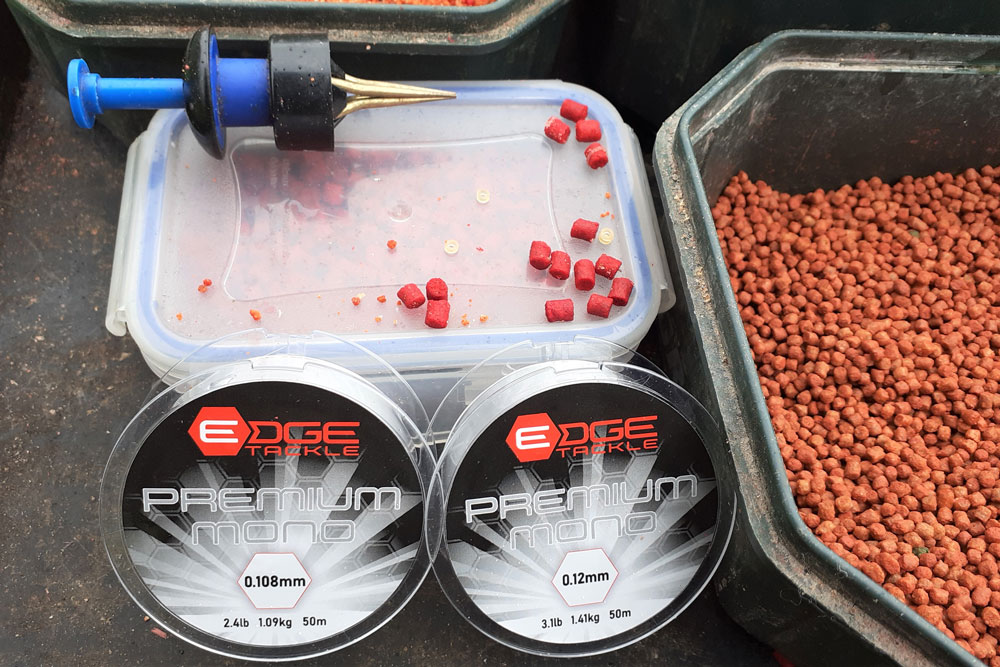
Rig Making
Once I trust a thin diameter line, I will use it for making up my pole rigs. This is a laborious process, so I want to use the best components I can find. In this instance, light-to-medium strength tackle for general usage. I’m fussy about the pole floats I use and the hooks that go with them. Floats with translucent hollow plastic sight tips are easier to see in just about all light conditions and against most backdrops. I often combine these with round bend, medium wire hooks that have a black nickel finish. These VMC models are excellent, along with remarkably similar models from Sensas and Hayabusa. The shape is perfect for switching between a wide variety of baits like maggots, casters, worms, hemp, tares, and pellets. The unobtrusive finish helps to pull plenty of bites, while the wire gauge is strong enough to deal with anything big that muscles in on busy sessions.
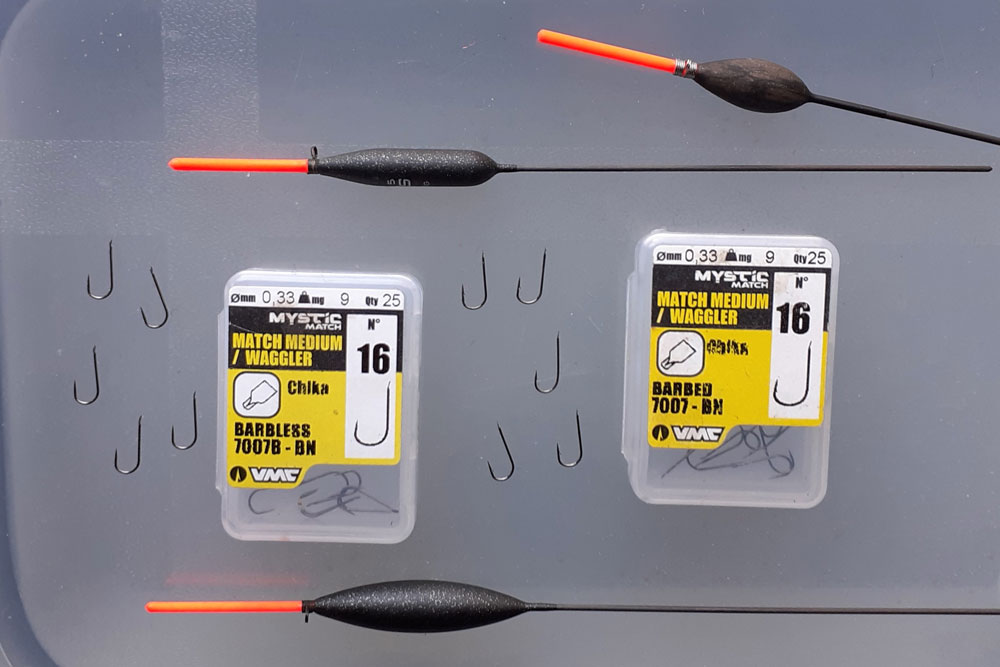
At Full Stretch
Many anglers mark their upper pole sections at regular intervals, to gauge rig lengths and the depths they are being fished at. This modern trend can also reveal how lines are performing, highlighting if they elongate due to catching lots of fish, or after landing something particularly big. During a hectic bagging session, a mate of mine noticed his rig had become several inches longer. That problem has implications, apart from weakening the breaking strain, it affects the depth the hook bait is being presented at. If the stretching goes unnoticed and bites suddenly dry up, you might never know the reason. That’s why it’s always a good idea to plumb up again as sessions progress, particularly if sport suddenly tails off. Another option is to use rig lines with controlled stretchability, which don’t elongate during heavy usage. Pole elastic compensates for any lack of give they may have.
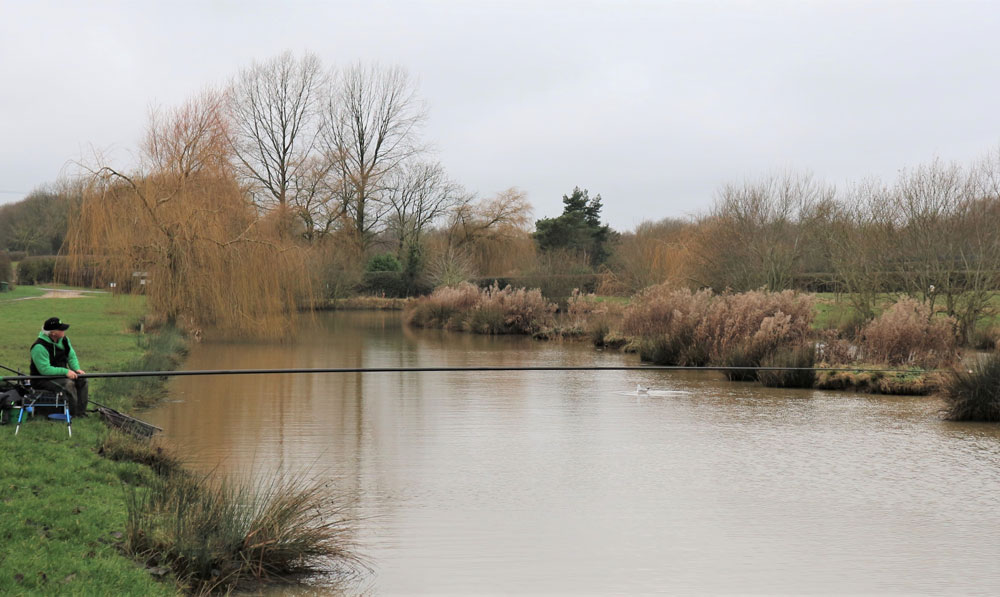
Sinking Reel Line
Since switching to Edge Sinking Mono, which is a soft olive brown colour and very robust, I’ve experienced no issues with my waggler fishing. This new product sinks well and has slightly less stretch factor compared to a well-known brand I used previously. It’s also refreshingly closer to the specifications printed on its spools, so I can trust the stated diameters and breaking strains. This is important because if you are led to believe you are using a 4lb reel line, and it’s really closer to 6lb, attaching a 3lb hook length to it creates a massive gap in diameters and strength. Waggler rigs perform much better when the reel line is more closely related with the trace mono. The main line obviously needs to be stronger, but not by such a massive step, which completely unbalances the set-up. It’s also a well-established fact that thinner reel line gains greater casting distance.
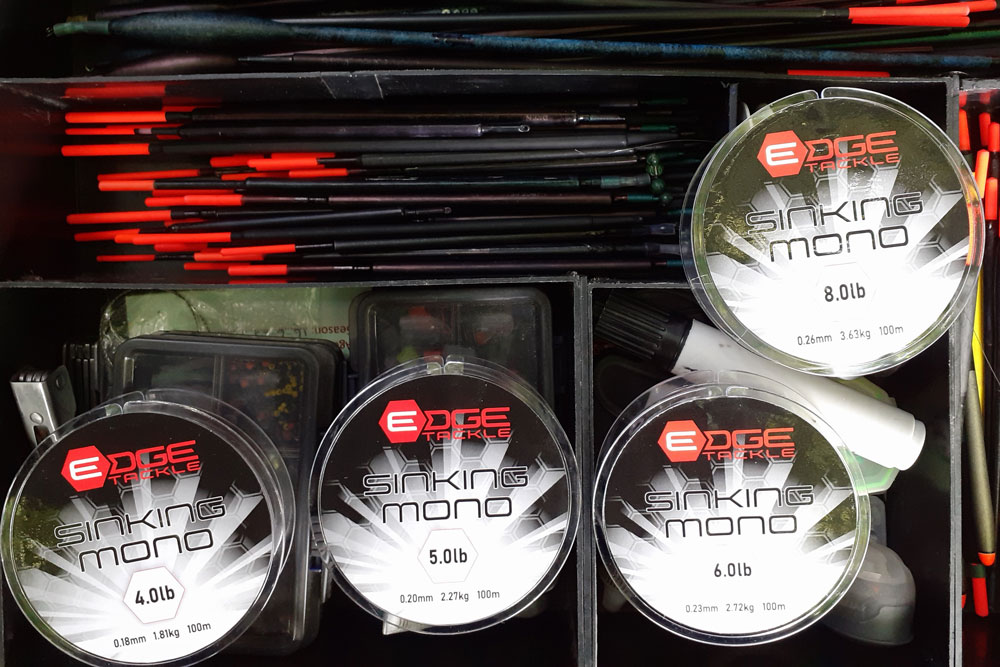
Favourite Floats
There’s a new trend involving loaded wagglers that only take a few small weights, or they can be anchored on sinking reel line with rubber line stops. But I can’t get out of the habit of using unloaded designs with large shot around their bases, with just a few small droppers spread out below. The big locking weights create resistance as the tackle hits the water, preventing it from diving too deeply. Having substantial shot each side of a swivel adaptor also helps to avoid slippage. The only thing I’ve changed with my traditional peacock insert floats, is converting their tips to hollow plastic ones. These are translucent and easier to see, particularly when casting into shadowy far bank areas. The new tips don’t affect the balance factor, casting accuracy or sensitivity. Combined with baits like casters, maggots, or small pellets, this simple method still works superbly well for me.
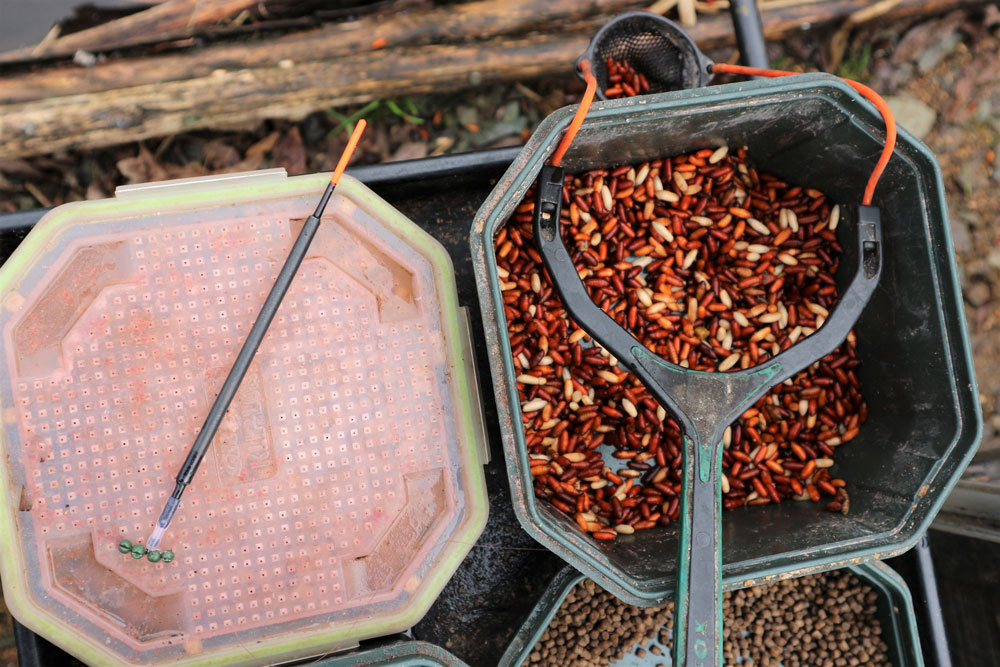
Working Better
Edge Sinking Reel Line interests me for several good reasons. Much of my waggler fishing entails casting tight to far bank features, where I don’t want to drag the end tackle out into open water while trying to sink the reel line. The best way of keeping the float where it has landed is to submerge the rod tip and then to flick it up sharply, which with a good sinking mono is normally enough to cut it through the surface tension. When using new reel line, you might have to do this several times, until its surface has worn a bit. I’ve found with Edge sinking mono it goes down even better when fishing open water, where you can overcast and wind back a few turns of line, again keeping the rod tip submerged. There’s less stretch than my favourite old sinking brand, which makes striking more responsive and greatly improves the feel factor when playing good fish in.
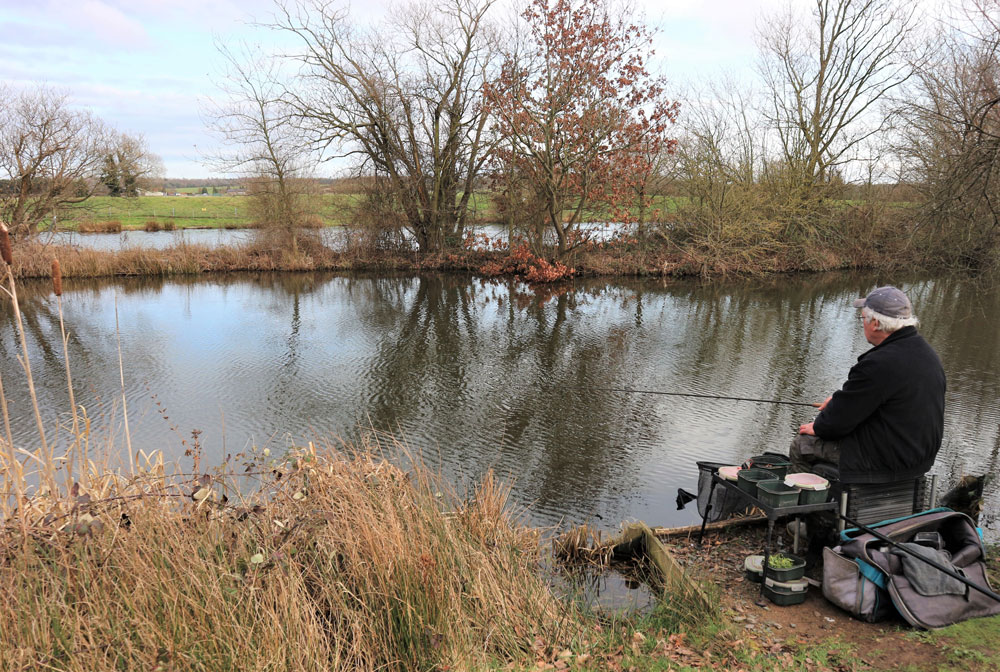
Catching More
A general theme I’ve noticed with good anglers is they employ clever little tricks that elevate their fishing to well above average. It might be a fastidiousness about the bait they rely on, but is more likely to involve the tackle they use. Lots of time spent on the bank improves competence, while also revealing the best available gear. The main secret is not to be constantly worried about important things like the line being used. Once a rig starts to work its magic, you don’t want to have to keep stopping to change some aspect of it, otherwise busy nets of fish like this tidy haul won’t happen. Tinkering with successful end tackle changes things, as we all know when a rig gets trashed. It’s always difficult to replicate a winning set-up. Having to stop and keep making tiny adjustments to get the tackle performing effectively again, annoyingly slows down your catch potential.
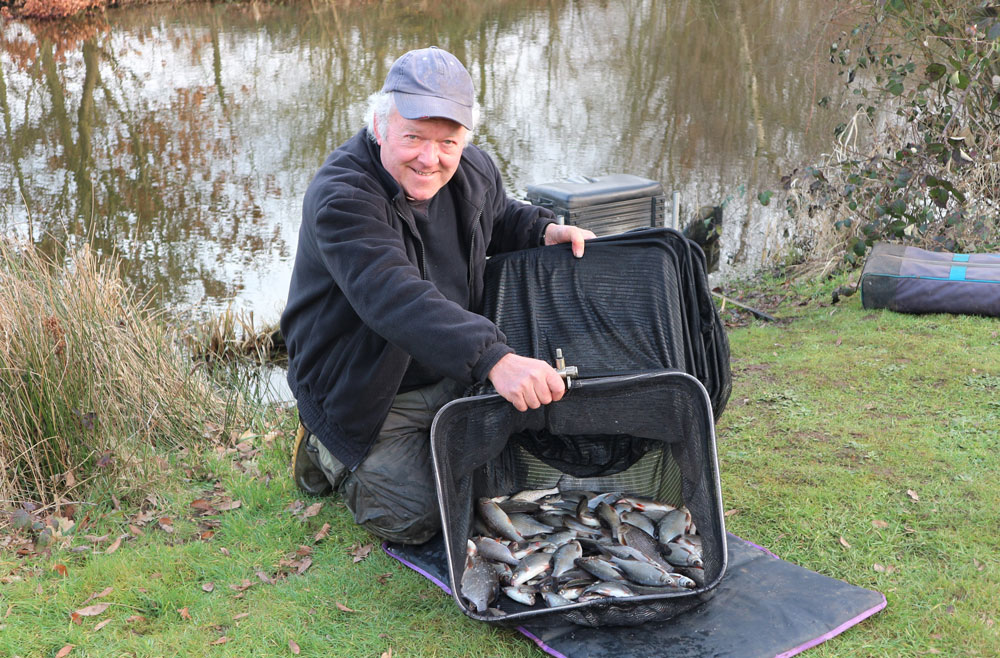
Careful Steps
Match fishing hard venues and difficult pegs taught me the importance of using the right line diameters to make something happen. I never like going over-light with my hook lengths and main lines, but every so often it’s essential to get bites, before worrying about landing what you might connect with. I remember scaling right down to a 12oz breaking strain when fishing a gin clear and frost affected river championship match. I hooked and somehow landed several good chub using far bank waggler gear, with a single maggot on a size 24 hook. It was heart in the mouth stuff, but I didn’t lose a fish and won. It wasn’t as irresponsible as you might think because providing you don’t strike hard when using light tackle, it’s quite difficult to break. We know that with pole rigs, where combining the right elastic, fine diameter lines and small hooks performs wonders.
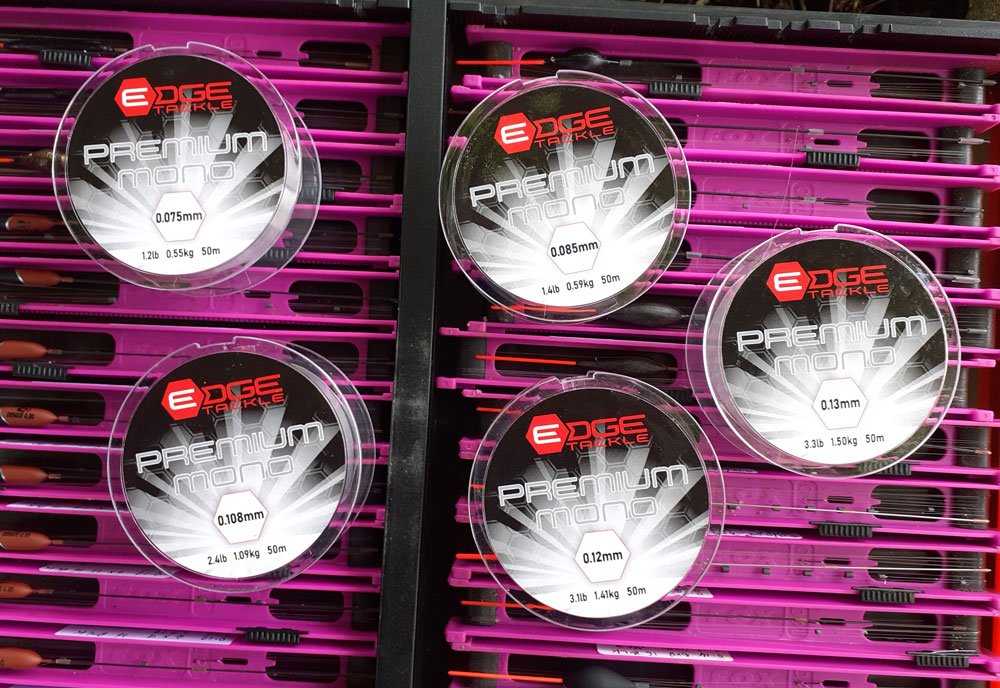
New Ways
The most obvious advantages of Edge Fluorocarbon Pure are its robustness and virtually invisible nature when submerged in water. The possible disadvantages are it’s much thicker and stiffer than super-thin rig lines. Fluorocarbon sinks faster than mono or braid, so I have experimented using it as main line for feeder fishing, where it cuts under the surface fifty percent quicker. However, its thick diameter loses a bit of casting distance. On the plus side, its minimal stretch is more direct, similar to braid. I also tried it with float tackle, but it’s impossible to lock shot on properly, due to its big diameter and slippery surface. Where fluorocarbon has really scored well for me is for short hook length usage, particularly combined with in-line feeders. It takes more punishment than anything else, also being less twist prone in longer trace lengths when using conventional feeder tactics.
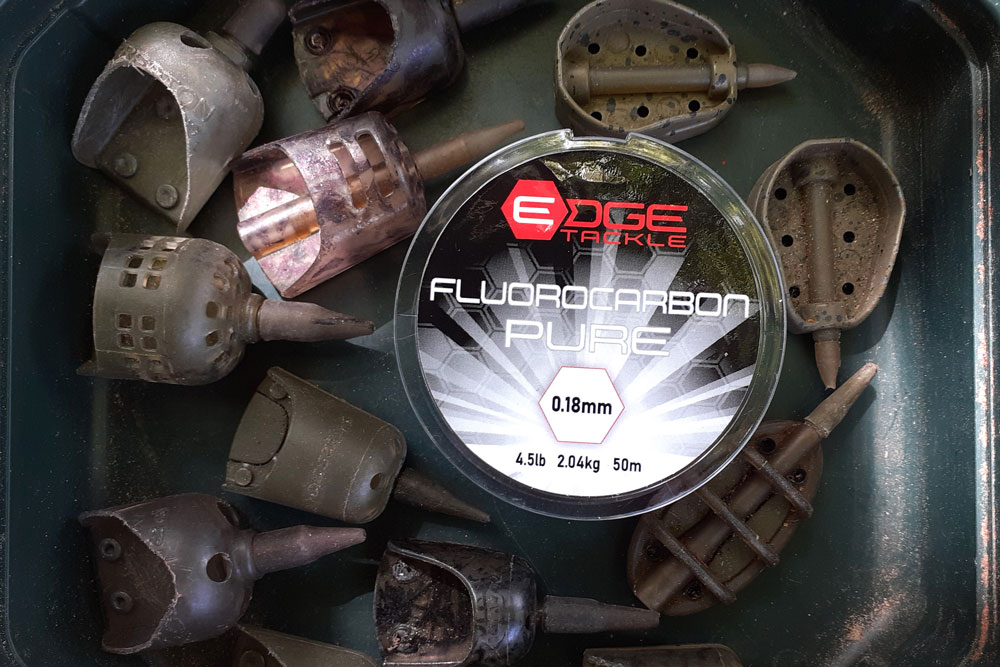
Breaking Habits
I can be as guilty as anyone when it comes to having favourite gear and refusing to budge from it, even when something new and possibly better comes along. But several decades spent reviewing tackle for Angler’s Mail forced me to constantly try out other products, making me realise innovation does happen occasionally. Team fishing also taught me a lot, where practice sessions often uncovered better ways of catching, which I don’t think I would have discovered on my own. It would normally be small reasons why some people were doing better, in one instance using a different make of line to that everyone else was using. It was thinner and certainly less shiny. Some refused to change, but I tried it and comfortably won my section on the next big match. That’s why I now force myself to constantly tinker with tackle and rigs, particularly the lines I use.
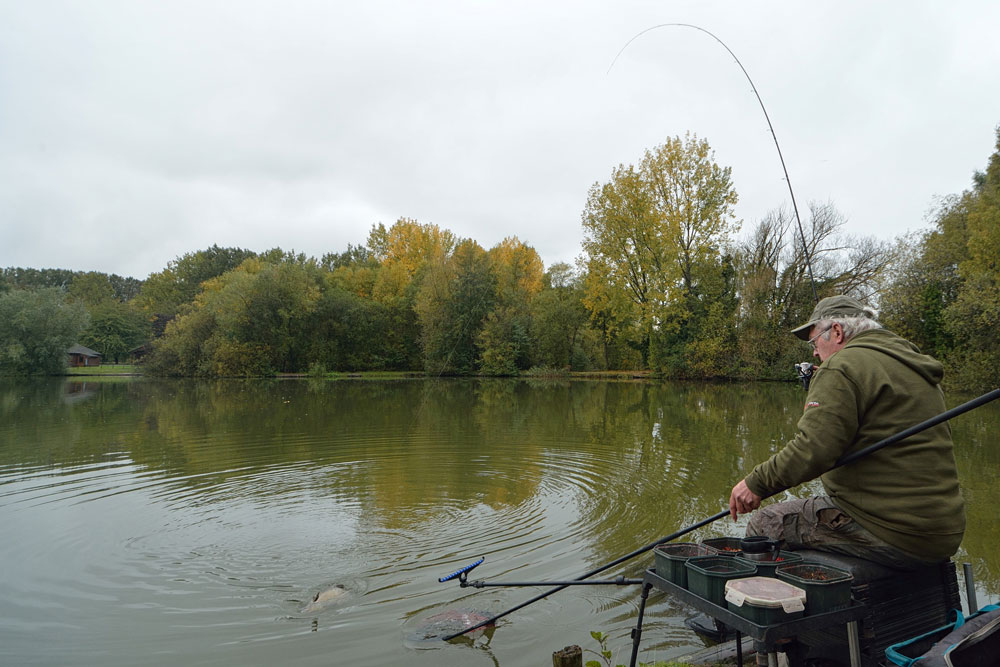

Are Edge still selling products?I’ve not seen any here in South Essex.